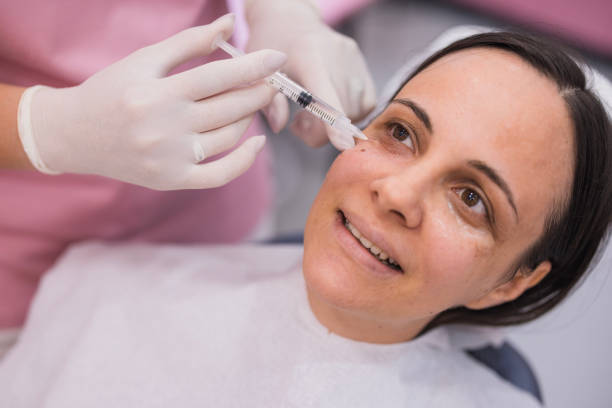Microneedling is a minimally invasive cosmetic procedure that involves the use of small needles to puncture the skin. It is primarily used to rejuvenate the skin, improve its texture and tone, and reduce the appearance of wrinkles, scars, and stretch marks. While microneedling can stimulate collagen production and enhance the overall appearance of the skin, it may not directly remove dark circles.
Dark circles under the eyes can be caused by various factors such as genetics, aging, fatigue, allergies, and lifestyle habits. Microneedling may help improve the overall appearance of the skin around the eyes by stimulating collagen production and increasing the absorption of topical products, which could potentially lead to some reduction in the appearance of dark circles. However, its effectiveness in specifically targeting dark circles may vary from person to person.
For treating dark circles, other procedures or treatments such as topical creams containing ingredients like retinoids or vitamin C, laser therapy, chemical peels, dermal fillers, or addressing underlying causes like allergies or lack of sleep may be more appropriate. It’s essential to consult with a qualified dermatologist or skincare professional to determine the best treatment option for your specific concerns.

How long does microneedling for dark circles last?
In general, the effects of microneedling on dark circles may not be permanent, as the underlying causes of dark circles such as genetics, aging, fatigue, and lifestyle habits may still persist. However, some people may experience longer-lasting results than others. It’s essential to maintain a good skincare routine and follow any post-treatment recommendations provided by your skincare professional to help prolong the results of microneedling.
Additionally, some individuals may require multiple sessions of microneedling spaced several weeks apart to achieve optimal results for dark circles. Maintenance treatments may also be necessary to sustain the improvements over time.
Ultimately, the longevity of results from microneedling for dark circles can vary from person to person, and it’s essential to consult with a qualified dermatologist or skincare professional to discuss your specific concerns and develop a personalized treatment plan.

Which derma treatment is best for dark circles?
The most suitable dermal treatment for dark circles depends on various factors such as the underlying cause of the dark circles, the individual’s skin type, their overall health, and their specific concerns and preferences. Here are some common dermal treatments that may be effective for treating dark circles:
- Topical Treatments:
- Eye creams containing ingredients such as retinoids, vitamin C, vitamin K, peptides, and hyaluronic acid can help improve the appearance of dark circles by reducing pigmentation, increasing collagen production, and hydrating the skin.
- Chemical Peels:
- Chemical peels containing ingredients like glycolic acid or trichloroacetic acid (TCA) can help exfoliate the skin, improve skin texture, and reduce pigmentation, including dark circles.
- Microneedling:
- Microneedling involves creating tiny punctures in the skin to stimulate collagen production and improve skin texture. It may help reduce the appearance of dark circles by promoting skin rejuvenation and enhancing the absorption of topical products.
- Dermal Fillers:
- Dermal fillers containing hyaluronic acid can be injected under the eyes to fill in hollow areas, reduce the appearance of dark circles caused by volume loss, and improve skin texture and elasticity.
- Laser Therapy:
- Laser treatments such as fractional laser therapy or intense pulsed light (IPL) therapy can help target pigmentation, stimulate collagen production, and improve skin tone and texture, thereby reducing the appearance of dark circles.
- Platelet-Rich Plasma (PRP) Therapy:
- PRP therapy involves extracting platelets from the patient’s blood and injecting them into the under-eye area to stimulate collagen production, improve skin texture, and reduce pigmentation.
- Surgery:
- In severe cases of dark circles caused by excess fat or skin laxity, surgical procedures such as lower eyelid blepharoplasty may be recommended to remove or reposition fat and tighten the skin around the eyes.
It’s essential to consult with a qualified dermatologist or skincare professional to determine the most appropriate dermal treatment for your specific concerns and develop a personalized treatment plan. They can evaluate your skin, discuss your goals, and recommend the most effective and safe treatment options for treating dark circles.
